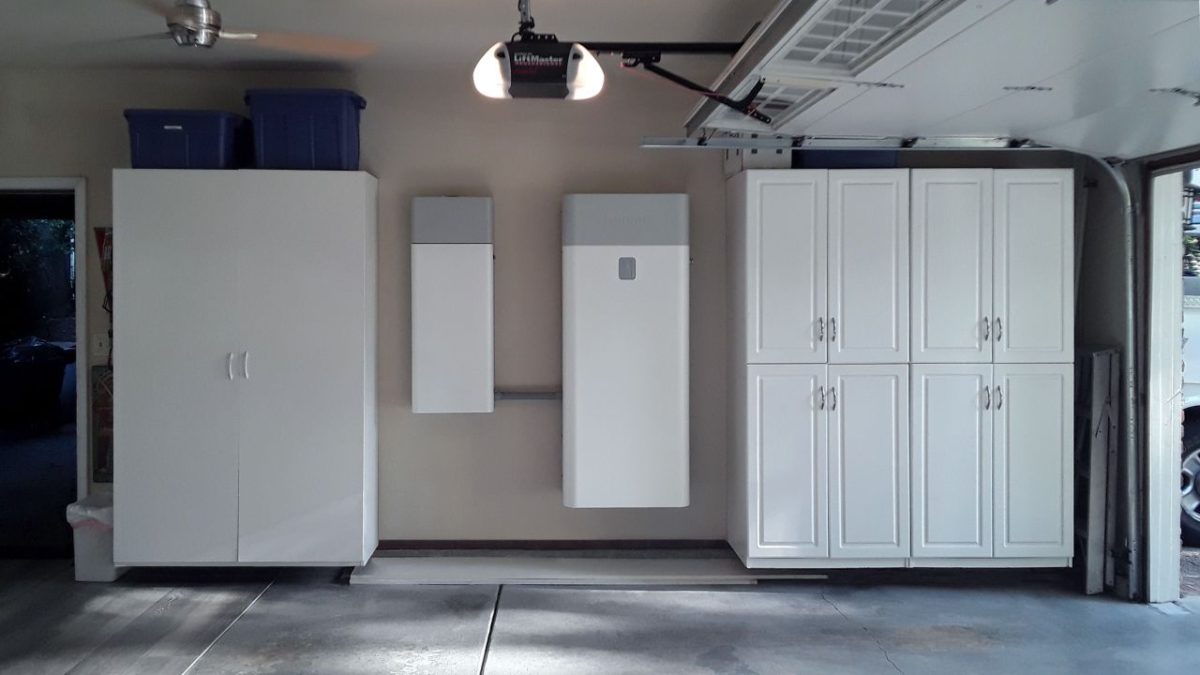From pv magazine USA
SunPower has announced an expansion to its residential battery storage system, SunVault Storage, in the form of 26 kWh and 52 kWh configurations, allowing the system to provide customers with backup power for every device in their homes in the event of an outage.
According to SunPower, the reasons behind the launch were twofold. According to the company’s 2021 Energy Sense Index, 40% of homeowners worry about outages every month. For customers in natural disaster-prone regions or California customers living in areas subject to frequent blackouts, these concerns often become reality, for a few hours or even days at a time. The company also cites EIA data outlining that the length of time an average American goes without electricity has doubled between 2013 and 2020.
“As power disruptions are becoming more commonplace, the demand for energy resilience and reliability is higher than ever,” said Nate Coleman, chief products officer at SunPower. “With the new SunVault, we are going beyond just the essentials. Customers can have the peace of mind that even if their grid service is disrupted, their lives don’t have to be.”
Under both battery configurations, the SunVault system can keep indispensable appliances running, like refrigeration and HVAC, while also allowing customers to keep power to non-essential, comfort appliances, like a pool pump, EV charger, or really anything in the home that runs on electricity.
Alongside the launch of the new battery configurations, SunPower also announced a new warranty for SunVault systems. All SunVault energy storage systems will come backed by a 10-year warranty, including 70% usable energy retention.
According to SunPower, installations of the new SunVault will begin in June 2022.
This content is protected by copyright and may not be reused. If you want to cooperate with us and would like to reuse some of our content, please contact: editors@pv-magazine.com.




AoA. Indeed advancement of technology is the need of the day. Sunpower is trying to provide good facility for masses and meet the requirements of faced by them in rutin life. I appreciate and recommend their struggle in this regard.
Can a small home 1200 square feet or smaller go off grid 356 days a year with this system. Does it have a back up generator if batteries become depleted ? What is the total cost for both systems including instal ? Are there tax rebates in California
Can a small home 1200 square feet or smaller go off grid 356 days a year with this system. Does it have a back up generator if batteries become depleted ? What is the total cost for both systems including instal ? Are there tax rebates in California
Yes. Your contractor should be able to help you build in a suitable margin for cloudy days, high usage scenarios, etc.
Within ten years half the U.S. households will be off grid.
Jeff
You’d want to install solar system with this and then, assuming it supports a generator input I’d feel confident in saying you could go off grid 365 days/yr. Yes, home batteries qualify for the 26% rebate when installed with solar or added to an existing solar system. Also some funds available for batteries from the state through SGIP program.
Yes, but, an inexperienced contractor would say that your small home uses 24 kWh/day, so with typical residential 350Wdc PV modules, you get 200Wac inverter output per module and at 25% average annual Capacity Factor, you need 20 PV modules. Sounds great, right?
But for 365 day system performance, you need to size for worst case, which is December January when the days are, you know, shorter. So at 15% capacity factor you need 34 PV modules.
Since you want to be truly carbon free, I assume you are heating with a heat-pump, not natural gas. That triples your peak demand to 75 kWh per day in the dead of winter. So at winters low CF of 15% you need 100 PV modules. They in turn take up 160 square meters of roof, which is 1,720 square feet of roof.
Given a 1,200 square foot house, that would be about 42′ x 28′ single-story ranch. Adding 22′ for a garage is 66′ x 28′ which is big enough to support 100 PV modules. But now half face South, while the other half face North. Acceptable in summer, but disastrous in winter. So unless it is a contemporary structure with an unconventional shed roof (all facing South) you only have 50 PV modules on the roof, the other 50 now have to be ground mounted.
They didn’t say prices, but Tesla Power walls are 13 kWh and $7,000 so assume these are $14,000 and $28,000 for the 26 and 52 kWh models.
Note to go off-grid, in a snow storm, just for 24 hours of battery backup you need 150 kWh in winter with the heat-pump running.
That is $84,000 for the battery pack.
$45,000 for the PV modules with string inverters.
Another $10,000 for the separate ground-mount.
Labor and electrical, $36,000 would be an inexpensive low estimate. More like $46,000.
Total $175,000 to $185,000 for only 24 hours battery in a winter snow storm. If you want 48 hours battery storage, please add another $84,000.
Sign here please.
Jeff, in regards to going off-grid, do you also want to be able to charge your Electric Vehicle? 1 car or 2? Will they be charged at night from the battery or by day if/when you are home?
Do you really consider changing an EV non essential?
Tesla may not be selling a battery only system. Will SunPower?